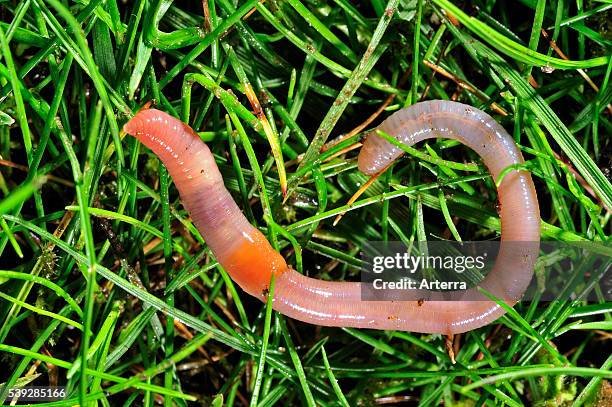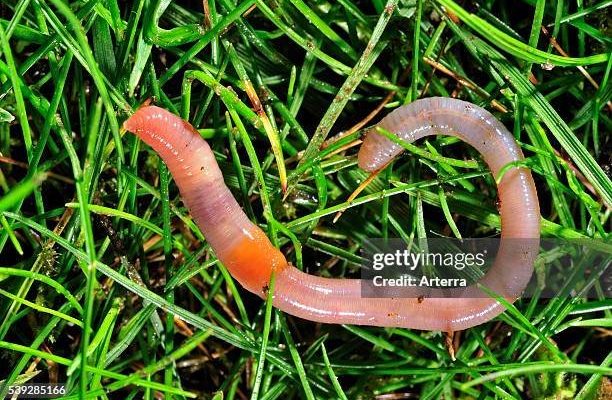
Picture this: you’re digging in your garden, and you come across a wriggling earthworm. At that moment, it’s not just a slimy creature; it’s a sign that your soil is alive and thriving! Understanding the different types of earthworms commonly found in gardens can help you appreciate their importance even more. So, let’s dive into the fascinating world of these little soil engineers!
Why Earthworms Are Essential for Your Garden
Before we jump into the types of earthworms, let’s talk about why they matter. Earthworms are like superheroes for your garden ecosystem. They break down leaves and organic matter, turning it into rich compost. This process enhances soil fertility. When they tunnel through the soil, they help aerate it, allowing water and nutrients to reach plant roots more effectively.
You might be wondering, “How do they do all this?” Well, as they move through the soil, they consume organic matter. Their digestive systems break it down and excrete it as **castings**—a nutrient-rich organic fertilizer. This not only helps plants grow stronger but also encourages beneficial microbes to thrive, making your garden even healthier.
In short, the presence of earthworms can indicate a rich, biologically active soil. If you have a good population of earthworms, your garden is likely in pretty good shape!
Common Types of Earthworms in Gardens
There are various types of earthworms, but we’ll focus on a few of the most common ones you’re likely to encounter in your garden.
European Nightcrawler (Eisenia hortensis)
One of the most popular types of earthworms is the **European Nightcrawler**. These guys are large, often reaching up to 7 inches in length. They thrive in rich, moist soil and are commonly used in composting and fishing bait. If you’ve ever heard of worm bins for composting, chances are these are the worms you’ll find in them.
What sets European Nightcrawlers apart is their ability to digest a wide variety of organic materials—from vegetable scraps to paper. This makes them excellent for composting, as they can help recycle waste into something beneficial for your garden.
Red Wigglers (Eisenia fetida)
Next up is the **Red Wiggler**, which is another favorite among gardeners and composters. These smaller earthworms usually measure around 4 inches long and are easily recognizable by their reddish color. Red Wigglers are fantastic for compost bins because they reproduce quickly and thrive on decomposing organic matter.
One of the cool things about Red Wigglers is their preference for the upper layers of soil, which means they’re always close to the surface where organic material is abundant. If you’re looking to boost compost production, adding a few Red Wigglers to your pile is a smart move!
Garden Earthworm (Lumbricus terrestris)
The **Garden Earthworm**, or Nightcrawler, is perhaps the most familiar sight for gardeners. They can grow up to 10 inches long and are typically found in gardens, meadows, and fields. These worms are great at creating deep burrows that enhance soil aeration and drainage.
Unlike Red Wigglers, Garden Earthworms prefer to stay deeper in the soil, which allows them to mix nutrients from deeper soil layers to the top where plants need them. They’re like the hardworking team players of the garden, ensuring that nutrients circulate effectively.
Asian Jumping Worm (Amynthas species)
Now, here’s a more recent addition to the earthworm family—the **Asian Jumping Worm**. These worms have captured attention because they exhibit a unique behavior: when disturbed, they thrash around, giving them their name. They can grow quite large, similar to the European Nightcrawler, and have a dark, glossy appearance.
Asian Jumping Worms tend to be more aggressive in consuming organic matter, which can sometimes lead to soil nutrient depletion if their populations become too large. While they can be beneficial, it’s essential to monitor their numbers and ensure they don’t disrupt the soil balance. It’s a good reminder that not every earthworm is a friend, after all!
Common Characteristics of Garden Earthworms
Now that we’ve covered a few specific types, let’s talk about the common traits you can expect from most earthworms in your garden.
– **Color:** Earthworms usually range in color from reddish to brown, depending on their species and the soil conditions.
– **Size:** Sizes can vary significantly, from just a few inches to nearly a foot long.
– **Segmentation:** They all have a segmented body structure, which allows them to move smoothly through the soil, helping them aerate and mix nutrients effectively.
Every type of earthworm contributes to your garden’s health, but keeping an eye on their populations can help you maintain a balanced ecosystem.
How to Attract and Maintain Earthworm Populations
Getting earthworms to thrive in your garden isn’t too complicated—it’s all about creating the right environment. Here’s how you can attract them and keep their populations healthy:
Build Healthy Soil
Earthworms love rich, organic soil. Start by adding compost, mulched leaves, or well-rotted manure to your garden beds. This not only provides food for them but also creates a moist environment they adore.
Consider creating a **layered compost pile** as well. This will attract worms naturally as they work through the organic matter, contributing their nutrients back into the soil.
Minimize Soil Disturbance
While some soil tilling is necessary, avoid excessive digging. Over-tilling can disrupt earthworm habitats and make it harder for them to thrive. Instead, consider using **no-till gardening** practices, which help maintain soil structure and keep those beneficial worms happy.
Provide Moisture
Earthworms need moisture to survive, so ensure your garden stays adequately watered. However, be careful not to overwater, as soggy conditions can lead to other issues. A balanced watering routine helps strike the right chord for soil health.
Identifying and Dealing with Problems
While earthworms are great for gardens, sometimes you might run into issues, particularly with invasive species like the Asian Jumping Worm. Here’s how to keep an eye on things:
Watch for Overpopulation
If you notice earthworms are everywhere and your soil seems to be losing nutrients, it might be time to check what type of worms you have. Asian Jumping Worms can reproduce rapidly, so it’s important to monitor their numbers. You may need to manually remove some if they’re overwhelming your garden.
Check Soil Health Regularly
Keep an eye on soil health indicators, like plant growth and the presence of beneficial insects. If plants start struggling, there might be an issue with nutrient balance, which could stem from earthworm populations.
Use Natural Barriers
If invasive species are a problem, consider using natural barriers like wood chips or mulch to protect your native garden ecosystem. This can help maintain a balance between beneficial and potentially harmful earthworm populations.
Understanding the types of earthworms commonly found in gardens opens up a whole new appreciation for these tiny creatures. As they burrow beneath your feet, they’re working hard to create nutrient-rich soil that helps your plants thrive. Each type of earthworm—whether it’s the hardworking Garden Earthworm or the easy-going Red Wiggler—plays a unique role in your garden’s ecosystem.
So the next time you dig in the dirt and uncover a squiggly friend, remember how crucial they are to your gardening success. With the right care, you can continue to nurture a thriving environment where these remarkable earthworms can do their magic. Happy gardening!

